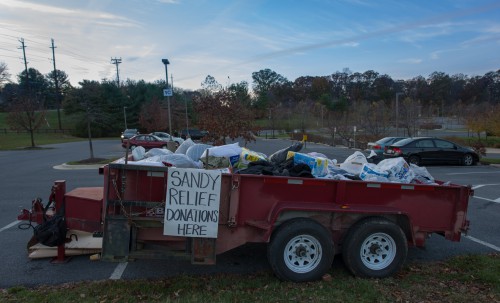By the time Hurricane Sandy hit the U.S. northeastern coast, it had dropped from a Category Three to a Category One storm, yet the following destructive nature was undeniable.
It has been a year since Hurricane Sandy and it seems that there is still much work ahead.
From Florida to Maine the storm affected the Eastern coastal border, wreaking havoc on many of the states in the area. Despite the damages inflicted, many seem to have forgotten that the storm ever happened at all.
Hurricane Sandy was the second costliest hurricane in U.S. history. It affected states all along the coastline and one year later we are still dealing with the after effects.
It is a year after Hurricane Sandy and relief efforts are still widely necessary. There are questions about rebuilding coastlines and what should be done in preparation for the next big storm. After portions of the New York coastline were destroyed last year, these questions seem particularly prevalent.
Seventy percent of New Jersey’s old submerged marshes were flooded. These marshes are natural storm barriers that lessen the force of incoming waves; a year later and they are still struggling with how to fix the issue.

Places such as Midland Beach on Staten Island have yet to fully recover and, due to the sustained damage, likely never will.
When news of the oncoming storm was being announced, no one believed that the nature of the storm was as destructive as the news would have us believe. We were seeing middling winds, some rain here and there, and waves that seemed far from disastrous. But once it hit in full swing, the threat of the storm was seen to its fullest extent.
There are still places and charities that are actively trying to help. There is The Robin Hood Relief Fund that has sent millions in relief contributions towards organizations in New York, New Jersey and Connecticut.
The Red Cross has sent $280 million to recovery items and $17 million in food.
According to Rolling Stone there are still a number of towns and cities strongly in need of help. Keansburg, New Jersey has seen a rise in the homeless with people sleeping in Keansburg dunes or couch hopping. Union Beach, NJ shows entire blocks still empty and they try and rebuild from their own finances and volunteers’ helping hands.
In Breezy Point, Queens, more than 300 families lost their homes and finances are quickly draining as they attempt to rebuild their own homes. All around the New York and New Jersey shore people who are simply trying to rebuild the lives that were taken from them. From street sides to businesses, to their own family homes, the hope is to someday soon see recovery, but much of that hope is beginning to slip.
The storm may be long and past but the struggles that the victims are dealing with are all too present and should not be forgotten.






